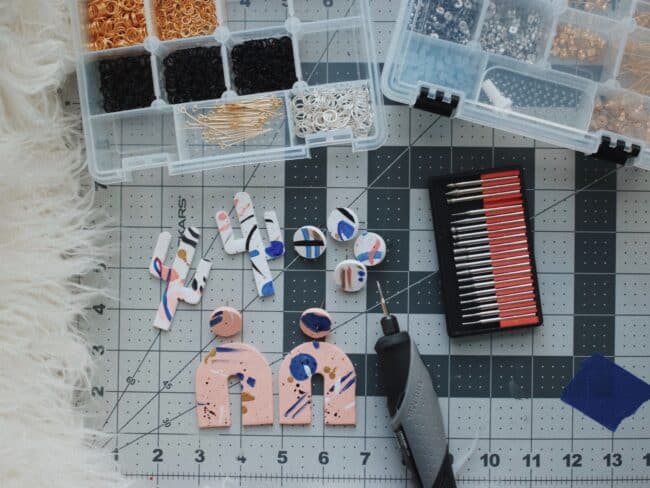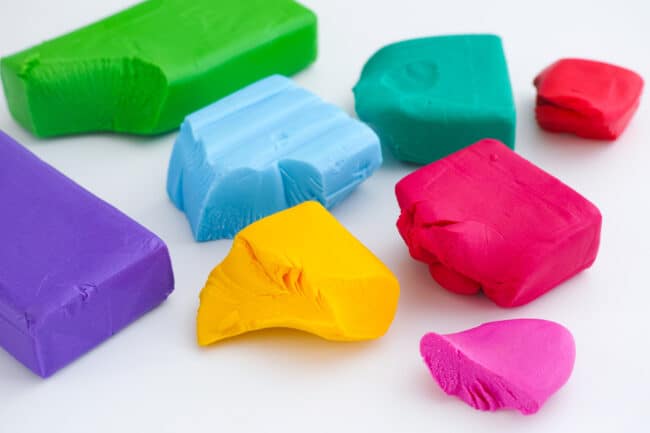Baking & Setting Polymer Clay: All you Need to Know
Baking your polymer clay creations is the crucial last step in the crafting process. It transforms the soft, malleable clay into a durable and solid material. Here are some important things to know about baking polymer clay to ensure successful results every time.
Polymer clay needs to be baked at the correct temperature and for the recommended time period to achieve the desired hardness and durability that you need for your creations.
Most polymer clays bake at temperatures between 230°F to 275°F (110°C to 135°C) for about 15 to 45 minutes per 1/4 inch (6mm) of thickness.
You should always refer to the manufacturer’s instructions on the packaging for specific baking guidelines for the brand of polymer clay that you are using.
Follow these guidelines below to ensure you are baking your creations the best way:
An oven thermometer is a tool that is essential to use if you possibly can to accurately monitor the temperature inside your oven.
All household ovens can have temperature variations, and an oven thermometer ensures that you are baking at the correct temperature.
Use a dedicated oven if possible for baking the polymer clay. This will prevent any potential fumes or residues from affecting food cooked in the oven later.
However, most of the time this is just not possible. Most of us use our regular home kitchen stove oven for baking clay.
Just ensure you are not cooking any food in the oven at the same time, and air out the oven a little after removing polymer clay.
Place your polymer clay creations on a smooth and clean baking surface during baking. A ceramic tile, glass, or dedicated baking sheet covered with parchment paper are good options. Avoid using a metal baking surface, as it can cause uneven heating.
Depending on the shape and size of your polymer clay creations, you may need to support or prop them up to maintain their desired shape during baking. You can use wadded aluminum foil or oven-safe materials to help with positioning.
Polymer clay emits harmless fumes when baking, but it’s still a good idea to provide adequate ventilation by slightly cracking open a window or using an exhaust fan, especially if you’re baking a large batch.
This post contains some affiliate links. This means that if you click on a link in this post and make a purchase via that link I may receive a small commission, at absolutely no additional cost to you.
Some Common Mistakes when Baking Polymer Clay
Color Changes: Some polymer clay colors may darken slightly or change color during baking. Be prepared for a slight color shift and do a test bake with a small piece before baking larger or more intricate projects.
Avoid Over-baking: Over-baking polymer clay can lead to brittleness, discoloration, or even burning. It’s better to slightly under-bake than to over-bake. Follow the recommended baking times and temperatures closely.
Cooling: Allow your polymer clay creations to cool completely after baking before handling them. They may be soft when hot but will harden as they cool.
Incorrect Baking Temperature and Time: Baking polymer clay at the wrong temperature or for the incorrect duration can lead to problems such as under-baking (resulting in a weak and brittle finish) or over-baking (causing discoloration, burning, or brittleness). Always follow the manufacturer’s instructions for baking temperature and time.
Using the Wrong Oven: Using an oven that isn’t properly calibrated or is used for baking food can lead to inconsistent results. It’s best to use an oven thermometer to ensure the accurate temperature of your baking environment and to have a dedicated oven for polymer clay.
Crowded Baking Space: Overcrowding the oven by placing too many pieces of polymer clay close together can lead to uneven baking and insufficient curing. Leave enough space between items for even heat distribution.
Not Properly Supporting Items: Some polymer clay creations may require support or propping to maintain their shape during baking. Failing to provide adequate support can lead to distortion or sagging during the baking process.
Baking on a Wrong Surface: Using a metal baking surface or baking directly on a wire rack can cause uneven heating and may result in undesirable textures or finishes on your polymer clay pieces. Always use a smooth and clean baking surface.
Ignoring Ventilation: While polymer clay fumes are generally not harmful, it’s a good practice to provide ventilation in the baking area by slightly opening a window or using an exhaust fan to ensure a comfortable working environment.
Mixing Brands: Mixing different brands or types of polymer clay with varying baking requirements can lead to unpredictable results. Stick to one brand and type of clay for a single project to maintain consistency.
Not Testing New Colors or Techniques: Polymer clay colors may change slightly when baked, and certain techniques may require adjustments in baking time or temperature. Always perform a test bake with a small piece when trying new colors or techniques.
Touching or Handling Items Too Soon: Polymer clay items may be soft when taken out of the oven and can easily be deformed if touched or handled before they cool completely. Allow them to cool before handling or moving them.
Skipping Sanding and Finishing: Skipping the step of sanding, buffing, and finishing can result in a less polished and less professional-looking final product. Take the time to properly finish your polymer clay creations for the best results.
Not Paying Attention to Details: Small details like fingerprints, dust, or lint can become more noticeable after baking. Pay attention to cleanliness and details before baking to ensure a high-quality finish.
By being mindful of these potential mistakes and taking the time to learn proper baking techniques, you can achieve consistent and successful results with your polymer clay projects.
As you gain experience, you’ll become more adept at avoiding these pitfalls and creating beautiful polymer clay creations.
Do I need any Special Equipment for Baking Polymer Clay?
Baking polymer clay does not require an extensive list of specialized equipment, but there are a few key items that can help ensure successful and consistent results. Here’s what you may need:


